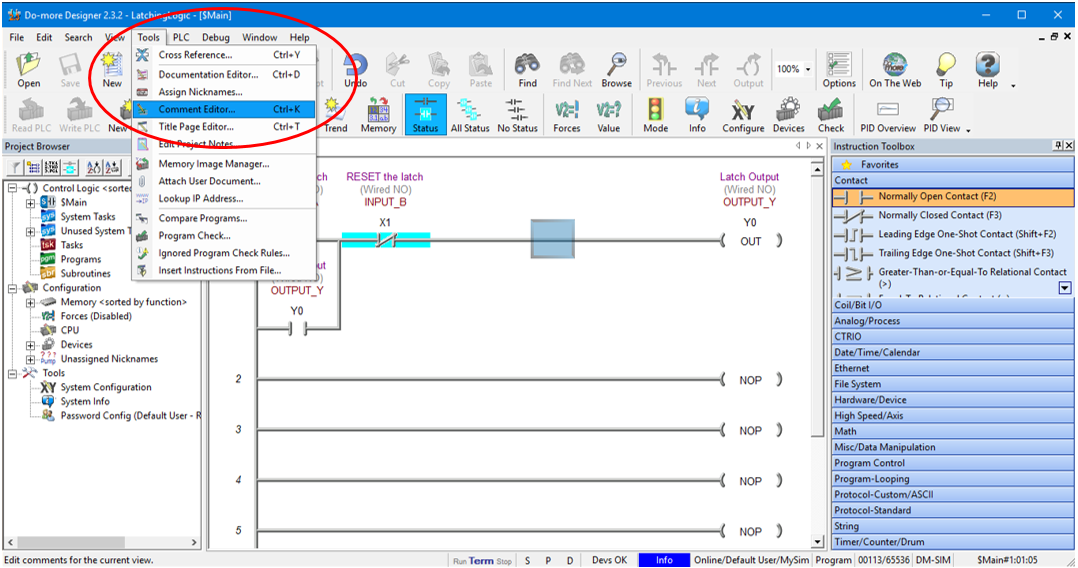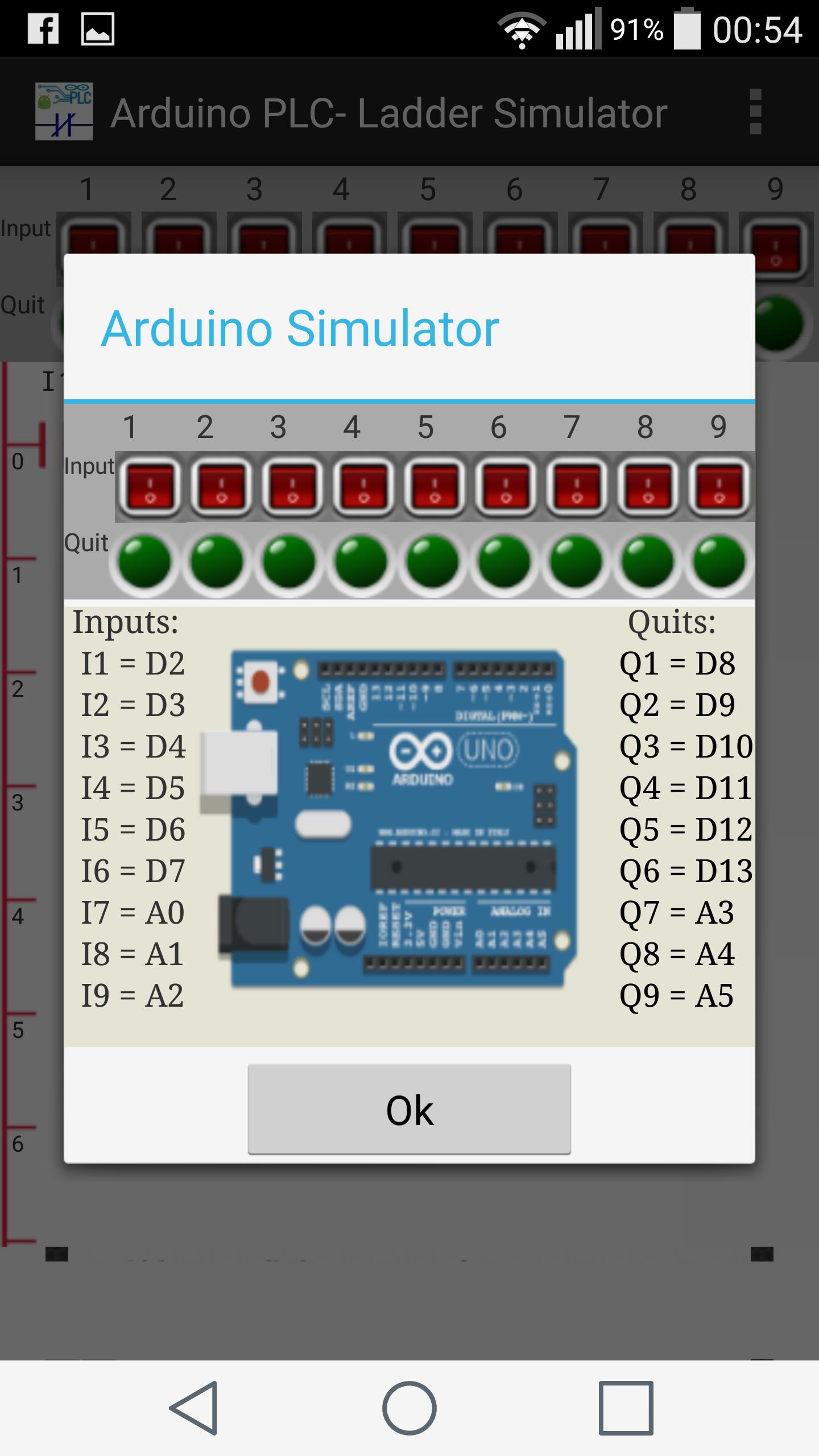While analizing the process that you have to automate you always have many conditions to respect for the safeness of the equipments, of the operators and of the process itself.
What is an Alarm
PLC Ladder Simulator is a simulator for the Android operating system with input and output objects that simulate the I/O ports of a real PLC. You can used PLC Ladder Simulator to create ladder-logic diagrams using components from the standard set used in these diagrams. PLC LADDER SIMULATOR.
An alarm is a condition of non-safe state of the machine.
Depending on the impact on the process, it can be:
- Writing interlocked equipment in ladder logic: Once you detected the fault conditions for your plant, you should use alarms and other conditions inside interlocks to avoid dangerous operations. I usually write outputs logic and interlocks in this way.
- MacroPLC: Ladder Logic Simulator for PLC Programming training, HTML5 based, runs on compatible web-browser. Always free, forever.
- Blocking
- Not blocking
An alarm can be connected to an input sensor, but it’s never the sensor itself; alarms are generally stored in words (16-bits registers) and displayed in the HMI, as well as used in the program as conditions to grant the safeness of the process.
What is interlocked equipment
Interlocked equipment, like motors or valves, is an equipment that has a protection circuit (real or logic) that interdicts the activation of the equipment if at least one danger condition is met.
Alarms with ladder logic
When i write alarms and interlocks i always use the same structure, that consists in many words where every bit corresponds to an alarm; this structure is almost a standard for many operators panel and has many good points but some drawbacks too (a drawback is that you can analize block of alarms comparing and masking entire words, that can be cheaper to write, but harder to understand when reading or debugging).
This is a basic sample on how i write an alarm block:

When writing alarms in this way the first segment must be always the reset block. This because even if you reset all the alarms pushing the reset button, if one fault condition is active, the alarm will be setted again few segments later, resulting in a still active alarm at the end of the program.
The last part is a recap of all alarms, really useful while debuggin because you can notice instantly what’s going on just by watching 1 segment.
The first bit of the word alarm has been chosen as “no active alarms” because usually:
- Alarms starts from number 1 and continues, so it’s no use to have an offset among alarms and bits
- This bits triggers all the alarms-screens and alerts on HMI and scada.
This is just a basic explanation, but you can find a more detailed explanation about fault logic here: http://www.contactandcoil.com/rslogix-5000-tutorial/create-fault-logic/
Writing interlocked equipment in ladder logic:
Once you detected the fault conditions for your plant, you should use alarms and other conditions inside interlocks to avoid dangerous operations.
I usually write outputs logic and interlocks in this way:
Same as alarms, interlocks must be above the segment that declares the output coil condition and the interlock bit should include every condition that stops the motor.
Plc Training Simulator
A common strategy that peoples uses when outputs grows in number is to have a block dedicated to interlocks that comes exactly before the block dedicated to output, like this:
When writing interlocks in this way debugging become really easy, because you can just navigate with 1 or 2 clicks of the mouse to the cause of interlock without having to analize a lot of logic.

You can download a sample application for RsLogix 500 here: https://www.mesta-automation.com/Downloads/alarms%20and%20interlocks.rar
Plc Simulator App
READ MORE
